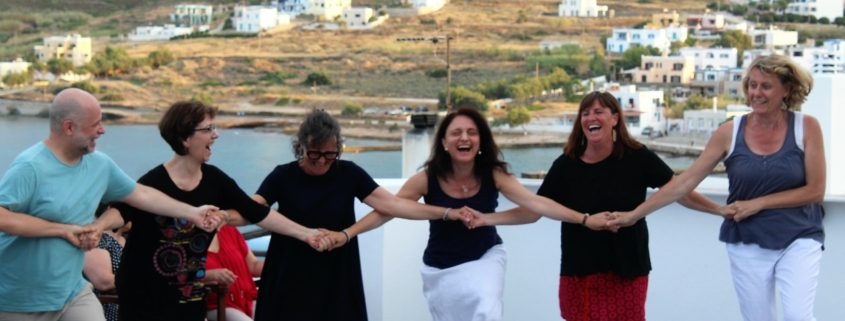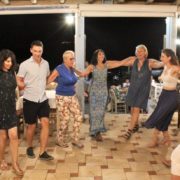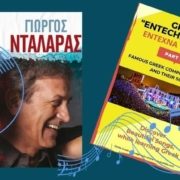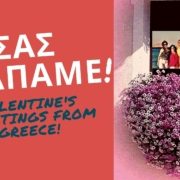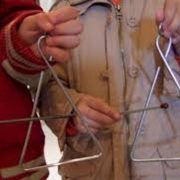The Zonaradikos is a traditional Greek dance from the region of Thrace in northeastern Greece, and it’s always a favorite among our Omilo students!
During our intensive summer courses on the Greek islands, the Greek dance lesson is a highlight of the afternoon activities. Whether you’re eager to join in and learn the steps yourself, or prefer to relax with a glass of wine while watching your fellow students dance to lively Greek music, it’s always an enjoyable and memorable experience.
It’s no secret that Greeks love to dance, and every region of Greece has its own unique style of traditional dances.
Island dances are typically joyful and rhythmic, often reflecting the gentle flow of the sea.
In contrast, Cretan dances are known for their speed and complexity,
while dances from the mountainous mainland tend to be slower and more grounded, with a heavier feel.
One particularly distinctive category comes from Thrace, in northeastern Greece.
A great example is the Zonaradikos ; a lively and much-loved dance that continues to bring people together, both in villages and on the dance floor during our Omilo programs.
The origin of the Zonaradikos
This dance comes from Eastern Romilia. Eastern Romilia is an area between Greece and Bulgaria. From 1878 to 1885 it was an autonomous region of the Ottoman Empire, then became part of Bulgaria.
Many Greeks – with considerable economic power- lived in this area. However, they were forced to leave the area after the end of World War I. Most of them came to live in Thrace and of course brought with them their traditions, part of which were their dances.
The name
The word “Zonaradikos” comes from the word «ζώνη»= belt. It owes its name to the way the dancers hold each other: they catch each other’s belts forming a circle.
(So a solution to dance during corona-times! You just need to make sure you wear a belt, so you can keep each other’s belts, instead of hands!)
The dance
The dance has 6, 8 or 12 steps depending on the area.
The dancers make two circles: one circle for men and one for women. According to the tradition, the last man in the dance to be caught with the first dancer of the women’s circle, in order to unite the circles in one, they must necessarily have a family relation. This custom existed in all the circular dances of the area.
The music
Due to the origin of dance from Eastern Romilia, the music that accompanies the dance has strong Balkan elements. The main instrument is the Thracian bagpipe, a kind of flute with a leather bag. The bagpipe is an instrument found in many Balkan countries. Other instruments are the clarinet and the tubercle.
Below you can see some examples of Omilo students learning to dance the zonaradikos, in its most simple form
It is fun, and the best gymnastics after the Greek lessons in the morning 😉
Omilo is not a dancing school 🙂
Note for the professional dancers among us or those watching videos on YouTube;
Omilo is NOT a dance school, but organizes simple dance lessons during the afternoon, to offer a first introduction to Greek music and dancing steps, while having fun and creating a relaxing atmosphere…
At Omilo, it does not matter to make mistakes, as long you stay in the correct rhythm and you keep following the circle 😉
Let’s dance the zonaradikos on a popular song!
In recent years, a traditional song was given a modern twist and it quickly became a radio hit in Greece!
We were in luck, because the song follows the same rhythm as the Zonaradikos dance!
In the video below, you can watch Eva singing while our Omilo students dance along to the beat.
Want to learn the song yourself? then click here and read the lyrics in both Greek and English
++++++++++++++++++++++++++++++
Interested in more Greek dances?
Then click below to learn more about
Siganos
and
Kalamatianos.

